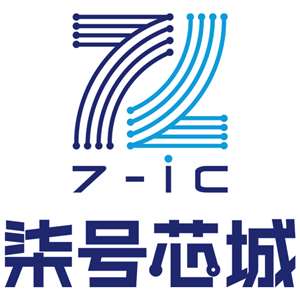X1235 – Preliminary Information
the course of a read operation. In this device, the time is
latched by the read command (falling edge of the clock
on the ACK bit prior to RTC data output) into a separate
latch to avoid time changes during the read operation.
The clock continues to run. Alarms occurring during a
read are unaffected by the read operation.
CCR access
The contents of the CCR can be modified by perform-
ing a byte or a page write operation directly to any
address in the CCR. Prior to writing to the CCR
(except the status register), however, the WEL and
RWEL bits must be set using a two step process (See
section “Writing to the Clock/Control Registers.”)
Writing to the Real Time Clock
The time and date may be set by writing to the RTC
registers. To avoid changing the current time by an
uncompleted write operation, the current time value is
loaded into a separate buffer at the falling edge of the
clock on the ACK bit before the RTC data input bytes,
the clock continues to run. The new serial input data
replaces the values in the buffer. This new RTC value
is loaded back into the RTC Register by a stop bit at
the end of a valid write sequence. An invalid write
operation aborts the time update procedure and the
contents of the buffer are discarded. After a valid write
operation the RTC will reflect the newly loaded data
beginning with the next “one second clock cycle” after
the stop bit is written. The RTC continues to update
the time while an RTC register write is in progress and
the RTC continues to run during any nonvolatile write
sequences. A single byte may be written to the RTC
without affecting the other bytes.
The CCR is divided into 5 sections.These are:
1. Alarm 0 (8 bytes; non-volatile)
2. Alarm 1 (8 bytes; non-volatile)
3. Control (4 bytes; non-volatile)
4. Real Time Clock (8 bytes; volatile)
5. Status (1 byte; volatile)
Each register is read and written through buffers. The
non-volatile portion (or the counter portion of the RTC) is
updated only if RWEL is set and only after a valid write
operation and stop bit. A sequential read or page write
operation provides access to the contents of only one
section of the CCR per operation. Access to another sec-
tion requires a new operation. Continued reads or writes,
once reaching the end of a section, will wrap around to
the start of the section. A read or write can begin at any
address in the CCR.
It is not necessary to set the RWEL bit prior to writing
the status register. Section 5 supports a single byte
read or write only. Continued reads or writes from this
section terminates the operation.
Accuracy of the Real Time Clock
The accuracy of the Real Time Clock depends on the
frequency of the quartz crystal that is used as the time
base for the RTC. Since the resonant frequency of a
crystal is temperature dependent, the RTC perfor-
mance will also be dependent upon temperature. The
frequency deviation of the crystal is a function of the
turnover temperature of the crystal from the crystal’s
nominal frequency. For example, a >20ppm frequency
deviation translates into an accuracy of >1 minute per
month. These parameters are available from the
crystal manufacturer. Xicor’s RTC family provides on-
chip crystal compensation networks to adjust load-
capacitance to tune oscillator frequency from +116
ppm to –37 ppm when using a 12.5 pF load crystal.
For more detail information see the Application
section.
The state of the CCR can be read by performing a ran-
dom read at any address in the CCR at any time. This
returns the contents of that register location. Addi-
tional registers are read by performing a sequential
read. The read instruction latches all Clock registers
into a buffer, so an update of the clock does not
change the time being read. A sequential read of the
CCR will not result in the output of data from the mem-
ory array. At the end of a read, the master supplies a
stop condition to end the operation and free the bus.
After a read of the CCR, the address remains at the
previous address +1 so the user can execute a current
address read of the CCR and continue reading the
next Register.
CLOCK/CONTROL REGISTERS (CCR)
ALARM REGISTERS
The Control/Clock Registers are located in an area
accessible following a slave byte of “1101111x” and
reads or writes to addresses [0000h:003Fh]. The
clock/control memory map has memory addresses
from 0000h to 003Fh. The defined addresses are
described in the Table 1. Writing to and reading from
the undefined addresses are not recommended.
There are two alarm registers whose contents mimic the
contents of the RTC register, but add enable bits and
exclude the 24 hour time selection bit. The enable bits
specify which registers to use in the comparison between
the Alarm and Real Time Registers. For example:
Characteristics subject to change without notice. 3 of 22
REV 1.0.9 8/29/02
www.xicor.com










![]()
![]()

![]()
![]()


![]()
